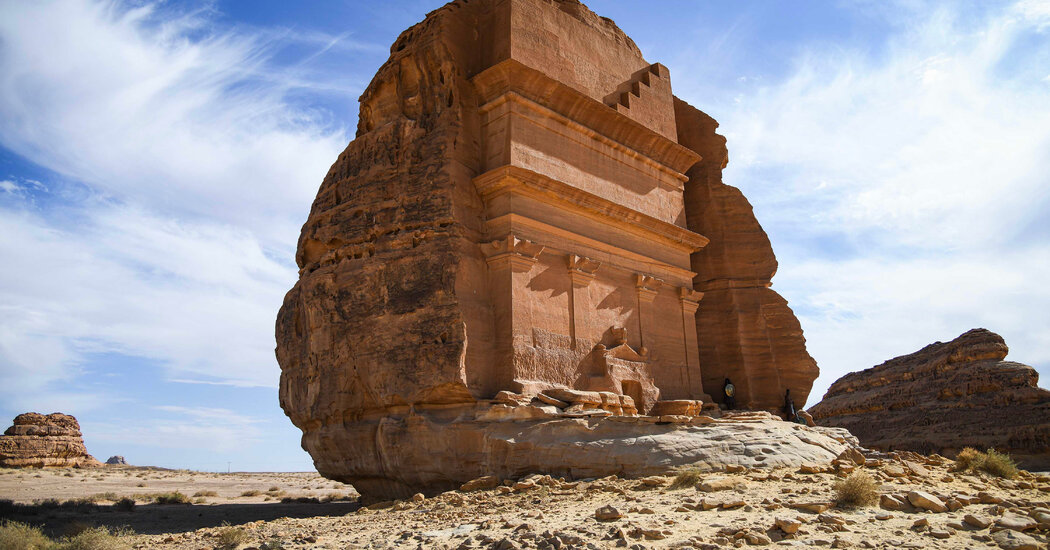
Wandering alone along the southern fringes of Saudi Arabia’s mountainous Asir Province, some eight miles from the Yemeni border, in a nondescript town with a prominent sculpture of a rifle balanced on an ornately painted plinth, I met a man, Nawab Khan, who was building a palace out of mud.
Actually, he was rebuilding the structure, restoring it. And when I came across him, he hadn’t yet begun his work for the day; he was seated on the side of the road beneath its red-and-white windows — cross-legged, on a rug, leaning over a pot of tea and a bowl of dates.
Two weeks earlier, on the far side of the country, a fellow traveler had pointed at a map and described the crumbling buildings here, in Dhahran al-Janub, arranged in a colorful open-air museum. Finding myself nearby, I’d detoured to have a look — and there was Mr. Khan, at first looking at me curiously and then waving me over to join him. Sensing my interest in the cluster of irregular towers, he stood up, produced a large key ring and began opening a series of padlocks. When he vanished through a doorway, I followed him into a shadowy stairwell.
This, of course, was my mother’s worst nightmare: Traveling solo, I’d been coaxed by a stranger into an unlit building in a remote Saudi village, within a volatile border area that the U.S. Department of State advises Americans to stay away from.
By now, though, more than halfway through a 5,200-mile road trip, I trusted Mr. Khan’s enthusiasm as a genuine expression of pride, not a ploy. All across Saudi Arabia, I’d seen countless projects being built, from simple museums to high-end resorts. These were the early fruits of an $800 billion investment in the travel sector, itself part of a much larger effort, Vision 2030, to remake the kingdom and reduce its economic dependence on oil.





